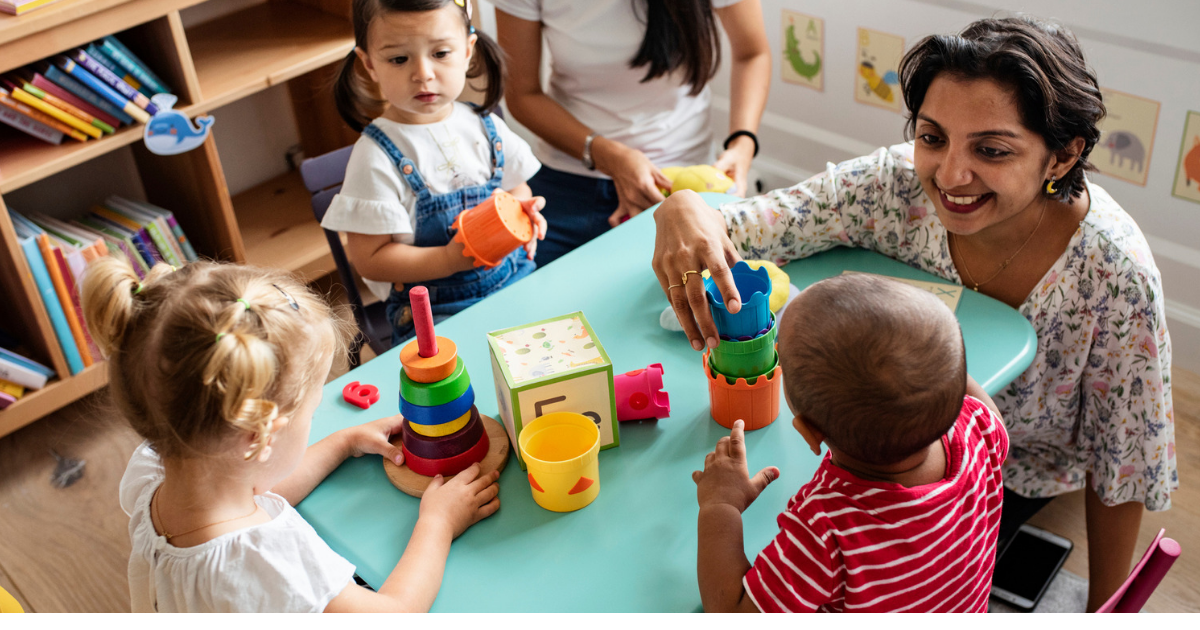A Selection of State Accomplishments During the First 3 Years of PDG B-5

Last week, the Administration for Children & Families at HHS released a report to Congress highlighting grant activity for the Preschool Development Grant Birth through Five (PDG B-5) program, Highlighting a Sampling of PDG B-5 Grant Activities Between 2019–2021. This first federal report on PDG B-5 progress and accomplishments, based on grantee reports, demonstrates how states have used funding to enhance their early care and education (ECE) systems.
PDG B-5, created as part of the bipartisan Every Student Succeeds Act (ESSA) in 2015, is a competitive federal grant that supports states and territories in improving their early childhood systems. The grants support state efforts to enhance program quality, expand access, and increase efficiency of their systems through better collaboration and coordination. While states have flexibility in using their PDG B-5 awards, the program specifically encourages states to focus on five major activities: aligning existing programs, maximizing parental choice, building on the success of existing programs, fostering partnerships among stakeholders, and leveraging data for continuous improvement.
There are two types of PDG B-5 grants: Initial Grants and Renewal Grants.
- Initial Grants are one-year grants to conduct a state-level B-5 needs assessment and create a strategic plan.
- Renewal Grants are three-year grants that states use to implement their strategic plans and address priorities identified in their needs assessments.

This report includes highlights and accomplishments of states in the period between January 2019 and December 2021. States leveraged PDG B-5 funding for a range of activities to meet their specific needs. Select examples from the report are below.
Conducting Needs Assessments
Many states reported that the needs assessments conducted with their Initial Grants were the first comprehensive efforts of their kind. The process gave states the opportunity to work across agencies and programs, engage multiple partners, and bring in new perspectives. States evaluated issues ranging from family access to programs, to workforce professional development, to integrated data systems, and more. State ECE landscapes are made up of multiple programs, funding streams, and regulations that are too often disjointed. Having the resources to step back and determine where gaps and overlap exist is a hugely important first step to strengthening programs and better serving children and families.
Maximizing Parent and Family Engagement in the B-5 System
Engaging parents and maximizing parent choice are top priorities for PDG B-5.
In Connecticut, the Office of Early Childhood (OEC) used PDG B-5 to create its first Parent Cabinet. This parent-led advisory group worked directly with the state agency overseeing key early childhood programs and provided guidance on how to improve relevant programs, policies, and laws; the needs of families from all backgrounds; and how OEC could form partnerships with families. In Puerto Rico, PDG B-5 funding supported Two Gen on Wheels, a bus equipped with internet access, computers, and other materials and tools that traveled to remote communities with limited access to ECE resources. Program staff on the bus provided families with information on childhood development, strategies for managing emotions, family support resources, and how to access free services/resources in their area.
Supporting the Early Care and Education Workforce
Quality ECE programs are dependent upon a qualified, stable workforce. Recruiting, retaining, developing, supporting, and compensating the workforce continue to be major challenges for the field. Rhode Island used PDG B-5 funds to address ECE workforce turnover by creating a registered apprenticeship program that provided professional development and technical assistance in infant/toddler classrooms, offered increased compensation, and supported programs sponsoring apprentices. Maine offered joint professional development to staff, administrators, and partners on increasing the quality of settings to better serve children with disabilities or suspected delays. This included on-demand training, online facilitated module training, professional learning communities, and on-site consultations for teachers and administrators.
Promoting an Integrated B-5 Early Care and Education System
Multiple states used PDG B-5 funding to change their ECE governance structures to better align programs and strengthen coordination. Missouri transitioned 20 state programs serving children and families or providing professional development to providers into the Office of Childhood to ensure better collaboration and alignment of the state’s ECE system. Oregon created the Department of Early Learning and Care (DELC) to oversee ECE programs previously administered by different agencies. The new structure reduced burden and duplication, such as by consolidating funding streams supporting Oregon pre-K. Virginia also created a unified system for ECE, which involved moving child care licensing, monitoring, and the subsidy program to the Virginia Department of Education. The Department also created a uniform measurement and improvement system for all publicly funded ECE programs.
The report includes additional examples of how 47 states and territories have leveraged this funding to strengthen their early learning systems. PDG B-5 has been instrumental in helping states determine needs, set priorities, and take initial steps to improve efficiency of their often disjointed ECE systems. However, it is limited in reach. By design, the grants are temporary and the award amount is small, often best lending it to one-time initiatives and pilot programs. Unfortunately, states often do not have the funds to make longer-term investments and scale up efforts. Substantial and sustained resources are needed for states to truly tackle the challenges they face, many of which have been amplified since the pandemic.
We were pleased to see Congress provide $315 million in funding for PDG B-5 in the FY24 appropriations package passed last week, level with FY23. The fate of the program was at risk, as it was eliminated in the House Labor/HHS FY24 appropriations bill. This report does not include information on the 2023 round of PDG B-5 grant awards, where 21 states received new Initial Grants and 21 states received new Renewal Grants. Sustained funding will allow these states to proceed with their plans and continue important work to improve early learning systems.
Subscribe to FFYF First Look
Every morning, FFYF reports on the latest child care & early learning news from across the country. Subscribe and take 5 minutes to know what's happening in early childhood education.



